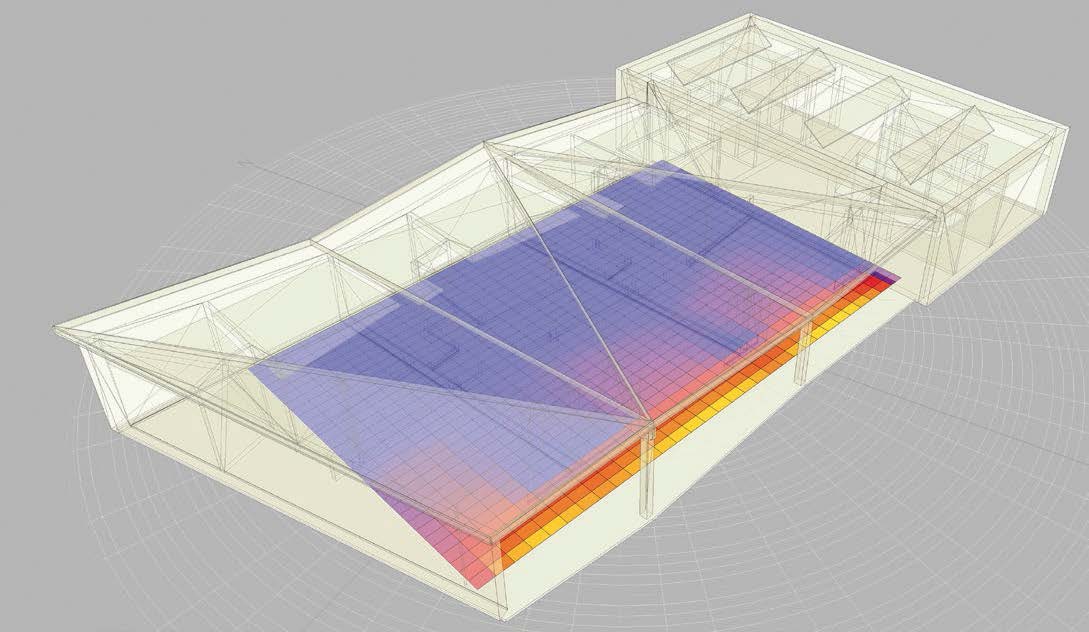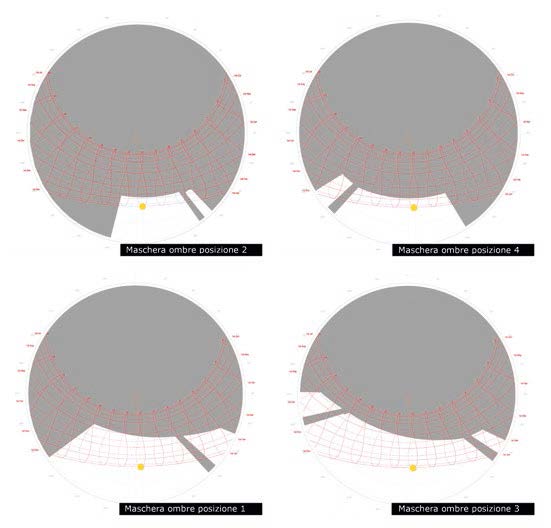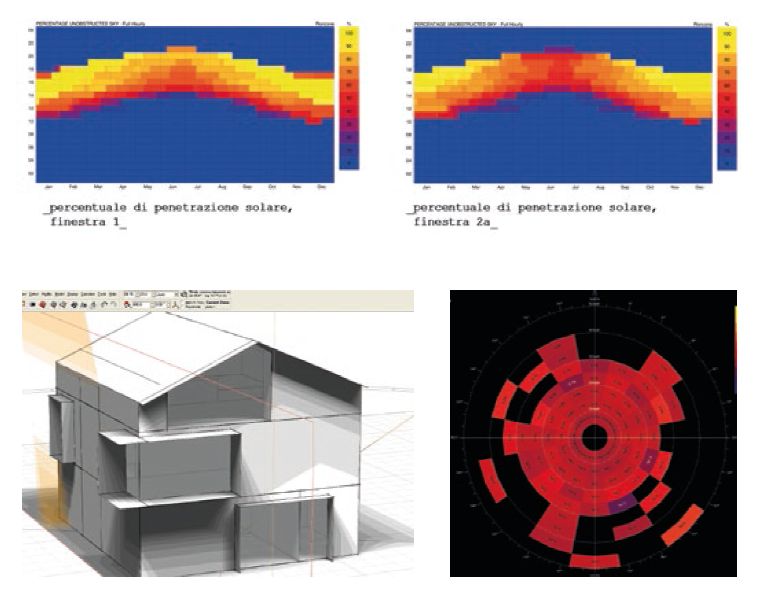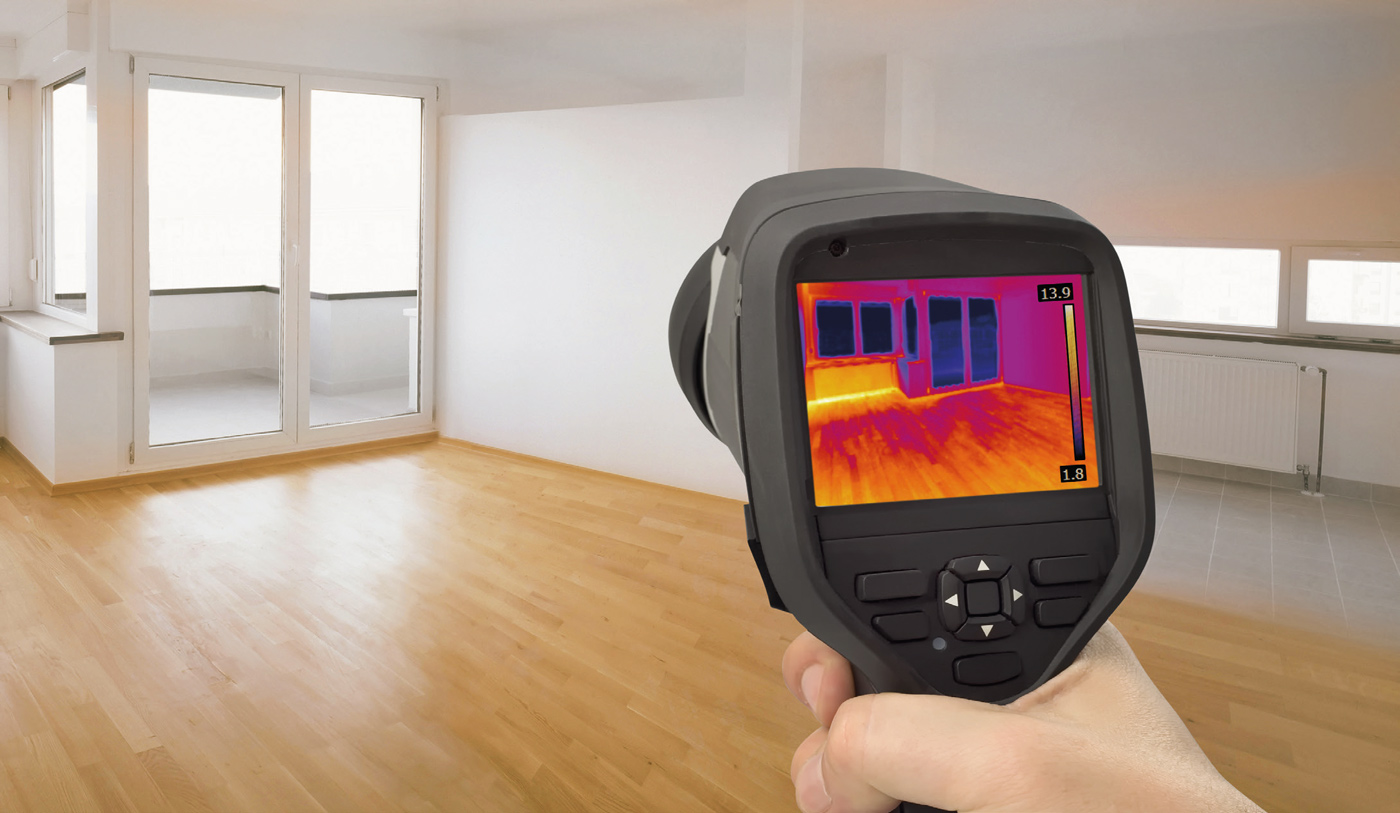CO-DESIGN: AKTIVHAUS AT YOUR SERVICE

AKTIVHAUS HAS MADE THE CONCEPT OF INTEGRATED DESIGN A WORKING REALITY
The purpose is to achieve true multidisciplinary design in order to improve the performance of the building system in terms of energy, economic running and environmental impact, with constant focus on the composition and design concept.
Aktivhaus has extensive knowledge of national and international building sustainability and energy efficiency standards, materials technology, construction techniques, structural and plant engineering, and site organisation and management in order to collaborate with the designer and provide expert and responsible support. It uses the latest dynamic simulation software for verifying the building’s bioclimatic, energy, acoustic and environmental behaviour from the earliest stages (design concept), in order to inform, model and guide all the individual architectural, system design and structural choices that lead to the final working drawings. The goal is to achieve the best possible combination of service to the designer, cost-results ratio, responsible use of resources and final quality of the work.


Private kindergarten in San Biagio (MN)
Co-design: Aktivhaus
CLIMATE MODELLING
A building is affected, first and foremost, by the environment in which it is located. An analysis of the surrounding area and environmental features is essential for several important aspects, depending on the design situation:
1. A careful evaluation of the environmental characteristics and existing level of urbanisation allows the ideal option to be determined based on optimal morphological and climate conditions in relation to the shape and purpose of the building.
2. Analysis of the surrounding area helps to determine certain aspects of architectural, structural and energy design through:
– the study of solar irradiation data, which allows the position, shape and orientation of the spaces to be defined, together with the need for any screening devices for the optimisation of indoor comfort;
– local climate information, which is essential for making the right plant design choices and determining potential renewable energy sources (photovoltaic, geothermal, wind, etc.);
– analysis of the availability of local raw materials in order to evaluate construction methods and techniques that respect the balance of the ecosystem.


ENERGY MODELLING
Aktivhaus uses an integrated dynamic matrix design process, working with special software that uses scientific methods to simulate the performance of a building in real time.
Dynamic simulations allow various design configurations:
– Analysis of the shape, orientation and building envelope;
– Minimisation of the annual energy consumption of buildings (summer and winter);
– Analysis of the effects of climatic conditions;
– Study of summer heat gain protection systems;
– Dynamic energy simulation to optimise the use of active and passive thermal loads, with analysis of the winter and summer behaviour of the building and its components, followed by the development of strategies to reduce energy requirements;
– Dynamic simulation of the daylight factor to optimise the use of natural and artificial light and prevent glare;
– Evaluation of air flows to maximise human comfort through fluid dynamics simulation for analysis of the effectiveness of natural and artificial ventilation.

Private kindergarten in San Biagio (MN)
Co-design: Aktivhaus
NEAR ZERO ENERGY BUILDINGS
Considering the quality of life and economic running of its buildings as fundamental, Aktivhaus aims at achieving the highest levels of comfort and thermal efficiency in each of its projects. The sun, a natural energy source, and the building envelope, the heart of the structure, are the key elements to achieving extraordinary results in the energy management of the building.
MINIMISING THERMAL BRIDGES
Dramatically reducing thermal bridges in buildings means making rooms more liveable, healthy and comfortable. For this reason, all critical points in Aktivhaus buildings are studied in detail using three-dimensional models; Aktivhaus is able to fully prevent the formation of surface condensation and mildew in all its building components.

HIGH INSULATION
All Aktivhaus structural elements are characterised by high levels of insulation, both towards the exterior and the ground. The insulation used is made with high performance materials that ensure the breathability of the building. The walls and roofs in Aktivhaus buildings have insulation figures up to 6 times lower than the limits set by the national energy efficiency regulations. The building envelope components have summer thermal wave lags of over 14 hours, to prevent overheating caused by the sun.
EFFICIENT PLANT DESIGN AND AIR QUALITY
The importance given to the air quality of the indoor environment, free from external pollutants and, above all, with optimal air circulation for the intended use, ensures the ideal liveability of the buildings. All Aktivhaus constructions use mechanical ventilation systems with pollen and smog filters and high-efficiency energy recovery.
This solution reduces the heat loss of the building and, at the same time, increases the wellness and comfort of the occupants.
The academic qualifications of the working group, combined with years of experience in the field of structural calculations, enables Aktivhaus to study, assess and present the various project phases with professionalism and experience.
The Aktivhaus team takes care of structural modelling and analysis, the design of structural elements and the definition of working drawings.
The structural design includes the application of finite element limit analysis (F.E.M.) to determine design stresses. The results are compared with the resistance values of structural elements in static load, seismic and fire conditions for structures built with reinforced concrete, steel, a combination of steel and concrete, solid wood, laminated wood and masonry.
The analyses are conducted in line with a new approach known as “Performance-Based Design” and in accordance with the latest European and Italian technical standards (the Eurocodes and Ministerial Decree of 14 January 2008 – NTC2008) through a well-defined process aimed at maximising structural performance, which can be summarised as follows:


1. Creation of a physical/mathematical model of the desired structure. This “calculation model” is developed with computer-aided numerical methods.
2. Determination of the loads to be considered in the design of the structure. The current regulations (Ministerial Decree 14/01/2008, Eurocodes) provides clear indications on the loads to be factored into the design of structures.
3. Resolution of the structure, i.e. identification of the “structural demand”.
4. Determination of the structure’s “capacity”. The so-called “capacities” of load-bearing structures are assessed in this phase (i.e. the load each component can bear in relation to envisaged conditions).
5. Safety checks: During this phase, a comparison is made between the “capacities” of the structural elements and the various “demands” from the specific load combinations considered. The achievement of the design target and the satisfaction of the client’s needs are ensured through interaction and constant verification in the coordinated work of the staff.

BLOWER DOOR TEST
The blower door test measures the air-tightness of a building; it consists in simulating the atmospheric effect of the wind: a fan (blower) is used to blow or suck air through a doorway in the building (normally a patio door or entrance door).
The air generated by the fan is controlled to produce a defined difference between the pressure inside the building and the external air pressure.
The method allows the detection of any air leaks in the building envelope and evaluation of the air-exchange flow rate.

THERMOGRAPHY
Thermography is a non-destructive analysis technique involving the production of images that reveal the levels of heat radiation emitted by bodies subject to thermal loads.
Thermography is able to pinpoint obvious construction flaws, such as heat loss due to defective insulation, thermal bridges, moisture in brickwork and air leaks (in conjunction with the blower door test).
In addition, assessments can also be made of insulation and of malfunctions in installed water/sanitary and heating systems.

ACOUSTIC TESTING
Compliance with acoustic requirements must be ensured, both in the design and execution phases, in order to ensure optimal living comfort, in accordance with current legislation, including Law no. 447 of 1995 and the Prime Ministerial Decree of 5/12/97, which requires “determination of the passive acoustic requirements of buildings and their installed components in order to reduce human exposure to noise”.
Aktivhaus performs all necessary tests to ensure the absolute quality of the structure and full compliance with living comfort requirements.











